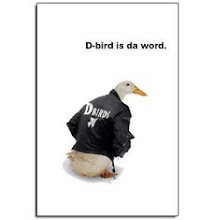Following on from yesterday's entry about Book 1, I came back to something that had been occupying a far corner of my brain for a while, a print book/e book question.
When I buy a physical/print book for the school library, theoretically I am buying an infinite number of reads/loans. I can lend it out as many times as I like. Realistically, I am not. The most popular books get read to death, fall apart from the love, the wear and tear, the realities of library shelves and school bags and the handling of different readers and so forth. (While those I have misjudged, or which just don't find readers, remain sadly pristine...and end up being culled).
And so, in the case of popular books, one buys another copy to replace the one that is beyond repair, and so the author gets another royalty, as is more than reasonable, since they've written something that has found friends.
Pixels and digital files, however, while they have their own potential wear-and-tear (file corruption? hardware failure?) are not subject to the same physical limitations as print and paper. But in the case of e-books and audiobooks (digital audiobook files, rather than physical housings such as CDs or audiocassettes), we kinda sorta expect to buy once and have it forever. So whether it's thumpingly popular or resoundingly ignored, the author's return is the same. Not entirely fair.
Perhaps this has all been canvassed elsewhere (do leave any useful links in the comments), but my mind has ticked over to wondering what is a reasonable equivalent. How many loans do I reasonably expect from a copy of, say, Tomorrow When the War Began, or Twilight, or [insert your own popular title here]? Thirty? Fifty? I'm not counting accidents (the rainstorm, the leaking drink bottle, the younger sibling with a felt pen) that can shorten a school library book's life rather quickly. But a paperback (and most fiction is paperback, and the most popular books in the library are often fiction) does not have an endless life, as a library book. If we buy an e-book in a form that permits lending, how many 'loans' should that one purchase permit before we should/need to buy another licence for that title, so the author gets recompense for their popularity?
Hardback books, of course, generally have a longer life since they have a more durable construction; and nonfiction, in our library, has a lot more hardbacks than paperbacks.
So in terms of e-books and libraries, I wonder if what we can arrive at is a two-tier system, kinda equivalent to hardback and paperback. Title X can be bought in 'hardback', which allows more loans before the file expires/needs renewal; or 'paperback', which allows fewer loans before licence renewal. This would also mean that if you weren't certain of a title's likely popularity, or knew it was a niche purchase for a relatively small group of students (eg. a specific senior course) you could invest at the lower rate and be able to spread your budget across more titles. Rather important, given the limited funds available to most school libraries.
I know I'm ignoring the whole question of e-book readers, e-publication formats, e-book lending logistics for school libraries and so forth. Plenty of discussion around on that.
But why don't you go find a couple of your most popular library books and see how often they've been read (and estimate how many more loans they will survive)? What do you think, then, is the average reasonable lifespan, in terms of number of loans, of a school library book, a paperback and a hardback? Do leave a comment - it will be interesting to compare people's thoughts.
Cheers
Ruth
PS in relation to e-book textbooks, right now the rental/annual subscription rates publishers are offering do not seem to comprehend the reality of faculty budgets. I know they have costs to cover, but from discussion I've heard, head teachers find the prices out of reach. Which can't help the publishers, since they presumably want customers. For print textbooks, a $X investment in print books means a number of years of use; when a publisher wants even half of $X per year for an e-book textbook subscription, faculties just don't have it. I watch, with interest, to see how this develops.
Subscribe to:
Post Comments (Atom)






















1 comment:
I'm in a girl's high school and some of my paperback manga have been read by more than 100 girls (a guesstimate based upon the number of times i've had to replace the date due slip). The manga still seems to be in OK condition. I suppose it depends on the quality of the binding (some cheap paperbacks don't last more than 20 readers)& the reader's sense of care toward books?!
Post a Comment